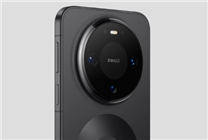Apple iPhone 17 vs. Xiaomi 17: Production Capacity vs. Competition
Summary:
- Apple faces production constraints affecting iPhone 17 activation numbers, not competitive threats from Xiaomi.
- As of early October, iPhone 17 series accumulates an activation figure of 269,500 units in China.
- Xiaomi 17 series displays unique sales trends, shifting popularity toward its Pro versions.
The tech landscape is buzzing with competition as Xiaomi and Apple unveil their latest flagship smartphones—the Xiaomi 17 series and the iPhone 17 series, respectively. However, a closer examination reveals that Apple’s roadblocks in this competitive arena are not primarily due to rival products, but rather due to limitations in production capacity.
According to recent data, Apple’s iPhone 17 series has achieved a cumulative activation volume of approximately 269,500 units in China by week 40 of October. This figure, while impressive, could have been even higher if not for constraints in production capabilities.
Breakdown of iPhone 17 Activation Numbers
The activation metrics indicate that the iPhone 17 Pro Max leads the series with around 107,700 units activated, followed closely by the iPhone 17 Pro at approximately 97,060 units. The standard iPhone 17, meanwhile, has garnered around 64,800 units. Notably, the Pro models have emerged as the most popular within the series, highlighting a trend among consumers who prefer high-end features.
In contrast, Xiaomi’s latest flagship series, the Xiaomi 17, has reported cumulative sales of approximately 1.076 million units. Interestingly, the sales distribution within the Xiaomi 17 series illustrates a significant shift compared to previous models. Historically, standard versions tended to dominate sales; however, the Xiaomi Mi 17 has sold only 194,000 units this time around.
Pro Models Take Center Stage
The recent performance of the Xiaomi 17 series underscores a noteworthy trend—the Pro models are rapidly becoming the focal point of the brand’s sales. The Xiaomi Mi 17 Pro Max has achieved impressive sales figures of 438,000 units, while the Xiaomi Mi 17 Pro has recently surpassed this mark, reaching 444,000 units.
This dynamic is further accentuated by stock availability; the high demand for the Xiaomi Mi 17 Pro Max has resulted in it being temporarily sold out, creating a surge in interest for the smaller-screen Pro model.
Market Dynamics and Consumer Preferences
Recent insights from Xiaomi officials indicate that the Xiaomi Mi 17 Pro Max is the preferred model, accounting for approximately half of the total sales in the series. This trend reflects a shift in consumer preferences toward more premium offerings, mirroring similar trends seen in Apple’s lineup.
The landscape is indicative of a broader consumer inclination toward devices that deliver substantial performance and features, which the Pro models from both companies are known to offer.
Conclusion
The competitive landscape between Apple and Xiaomi illustrates that while both companies have ambitious flagship models, their successes (or limitations) stem from different sources. Apple’s production constraints pose a significant hurdle that could prevent it from capitalizing fully on the interest in its iPhone 17 series. On the other hand, Xiaomi is navigating its way through changing consumer dynamics, with a clear preference for its Pro models.
As we move toward the holiday season and beyond, it will be fascinating to observe how both companies adapt to these challenges and opportunities within the smartphone market. Their ability to meet consumer demand and innovate will likely determine their standing in this fiercely competitive industry.
In conclusion, understanding the interplay between production capacity and market dynamics will remain crucial as we witness the evolution of these leading smartphone brands.








